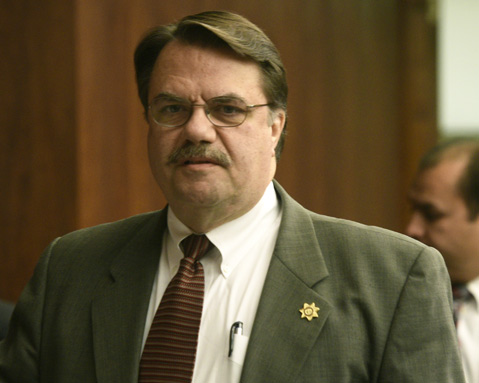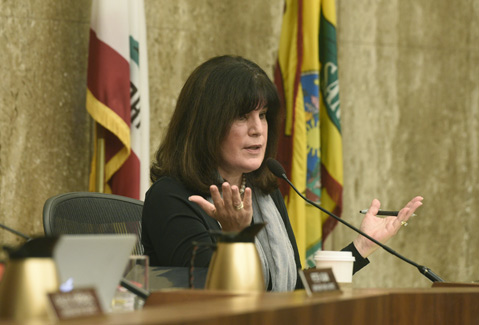Sheriff Thanks His Lucky STAR
New Jail Reentry Wing Saved from Chopping Block

With mental-health services and tens of millions of state dollars on the line, the Santa Barbara supervisors brought back to life a wing of Sheriff Bill Brown’s proposed northern branch jail — a project thought to be dead three weeks ago.
Late last week, Supervisor Steve Lavagnino tacked on an addendum to Tuesday’s agenda, proposing that the county executive staff research alternatives to the treatment and reentry project, better known as STAR, killed by a 4-1 vote on November 17.
That 228-bed facility, Brown promised, would be especially suitable for the mentally ill. He secured a $38 million, highly sought-after grant to pay for 90 percent of the construction costs. But after nine contentious meetings since 2013, the supervisors balked at the sheriff’s ever-changing plans. Last month, they rejected the project, arguing the county is too financially strapped to pay the $2 million annual operating costs and that jail cells are no place for the mentally ill.
But before the county sent a letter to the state to give the money back, Brown began to finagle a way for the county to keep the money. “Is there a way we could rework the proposal … in such a way that it would be more acceptable to the board?” he asked rhetorically in an interview before the vote. Brown did not speak at the meeting; he didn’t have to. The board voted 4-1 to direct staff to see if possibilities exist to keep the $38 million on the table.
Supervisor Janet Wolf — who has been the sheriff’s sharpest critic — was the sole, vocal dissenter. She contended Lavagnino’s move undermined transparent public policy and that the supervisors could have decided to look at STAR alternatives at the last meeting. “We did not take [the option] as a board,” she said. The supervisors already spent countless hours — besides the thousands of staff hours — discussing the rejected proposal.

Amid an otherwise heated hearing, Supervisor Peter Adam — who has also been an outspoken critic of Brown — pleaded with Wolf in what turned out to be a brief sweet moment. “I am not talking about reversing the project, either,” he said. “If there’s a possibility to reconsider using the money in a different way, we should look at it … I hope you support it.”
Exactly what these alternatives look like remains amorphous. A somewhat defensive Lavagnino stressed the move is not a revisit of the rejected STAR facility. But, he said, there is no rush to return the money. “The need is so great,” he said. “I don’t know what the opportunities are.”
Supervisor Doreen Farr — whose adult son recently made local news after being arrested for weapons and drug charges after a mental-health welfare check — wondered if 100 beds of the STAR facility could be set aside for mentally ill patients via a partnership with ADMHS (Alcohol, Drug and Mental Health Services). She emphasized the need for a deadline. “I don’t think it’s fair to let this drag on,” she said.
Although she did not speak at the meeting, Alice Gleghorn, director of ADMHS, has expressed preliminary interest in what a revitalized facility could bring to mentally ill patients. Supervisor Salud Carbajal suggested the facility would carry out Laura’s Law — court-ordered assisted outpatient treatment. “Could this truly be an unlocked facility?” he asked. “It would be worth examining.”
In June, in the final hour of the budget hearing, the board tucked away $120,000 for a Laura’s Law pilot program. Gleghorn had told the board her short-staffed department was struggling to keep up with all the other changes she was expected to carry out since arriving in early 2015. An update on the Laura’s Law pilot program is expected to return to the board next year.
The $38 million grant is part of legislation known as SB 1022, which was signed into law by Governor Jerry Brown in 2012. It allocated to 15 counties grants to build correctional facilities in the state. If the county were to pass on the $38 million, San Joaquin is next in line for the money.
Exactly how much flexibility the state will allow with the plans remains unclear. Board of State and Community Corrections spokesperson Tracie Cone said other counties have come in with scope changes — such as an additional bed — from time to time, but noted the project was “judged and approved on the merits of the proposal submitted.”
“These are highly completive bids,” she added. Whether or not the project could completely change would be a decision for the full corrections board, which meets again on February 3, 2016.



